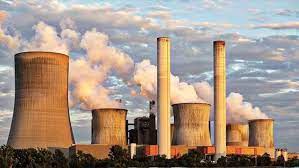A New research has revealed an increasing disconnect between industry hype and jobs data in the global oil and gas industry.
According to the report by Food and Water Watch, fossil fuel production has actually increased with more profit coming in while paradoxically, jobs continue to decline.
As the economy recovered from the global economic disruptions linked to the COVID crisis, fossil fuel companies ramped up and began producing more oil and gas and raking in record-breaking profits. But a new analysis shows that the industry’s recovery did not extend to workers, as oil and gas drillers continue to shed jobs.

The new Food & Water Watch fact sheet, “Oil Profits and Production Grow at the Expense of Jobs, Consumers, and the Environment,” shows the stark reality of fossil fuel production and employment. The recovery of the oil and gas industry in 2021 – with production close to 2019 levels – came as jobs in those industries continued to fall. The industry employed 504,000 workers in 2021, compared with 541,000 in 2020 and 695,000 in 2019. That amounts to a seven percent decline from 2020, and an astonishing 34 percent decline from the 2014 peak.
These trends continue to show that the industry is employing far fewer workers while producing far more; since 2014, production has risen 33 percent while jobs declined 37 percent.
These facts fly in the face of the spin generated by industry giants like the American Petroleum Institute (API), which churns out highly misleading reports that wildly exaggerate the state of the industry’s workforce. Their 2022 report – commissioned in 2021 and relying on 2019 data – claims that 11.3 million jobs are supported by the oil and gas industry. In reality, there were only 695,000 oil and gas jobs in 2019 that year.
Food & Water Watch has extensively documented the flaws with these industry studies, from what appear to be basic arithmetic errors such as double counting or the inclusion of entirely unrelated jobs. The API reports lump indirect and ‘induced’ jobs into their totals, accounting for the vast majority of their inflated totals.
“The oil and gas industry would rather pay shareholders than workers,” said Food & Water Watch Senior Researcher Oakley Shelton-Thomas. “It should be clear by now that more production means more pollution, but it hasn’t meant lower prices or more jobs.”
These national trends are evident in states with large oil and gas industries. In Pennsylvania, for instance, oil and gas jobs fell 20 percent in 2020 – despite record levels of gas production. Increased gas production carried over into 2021, but the job losses continued – the industries employed just 24,088 workers, a 2 percent decrease from the previous year.
In New Mexico, oil and gas jobs fell 25.8 percent in 2020, and in 2021 they continued their slide, falling another 9 percent. North Dakota’s industry jobs have fallen by more than half since 2014, and continued to decline in the past several years – meanwhile, oil production has increased slightly over that period. And in California, oil and gas production actually dropped considerably in 2021 – oil production fell 5 percent and gas production fell 17.5 percent from 2020 to 2021. Nonetheless, oil and gas employment in the state only fell 4 percent – less than in states where production increased.
The research also notes that the increased production has coincided with a huge jump in costs for consumers. Historically speaking, oil and gas production was 1.7 times higher in 2011 than it was in 2021; nonetheless, average gas prices soared this year, as did heating and utility costs.
Source: FoodandWaterWatch.org








Can you be more specific about the content of your article? After reading it, I still have some doubts. Hope you can help me.
Your point of view caught my eye and was very interesting. Thanks. I have a question for you.
Your article helped me a lot, is there any more related content? Thanks!